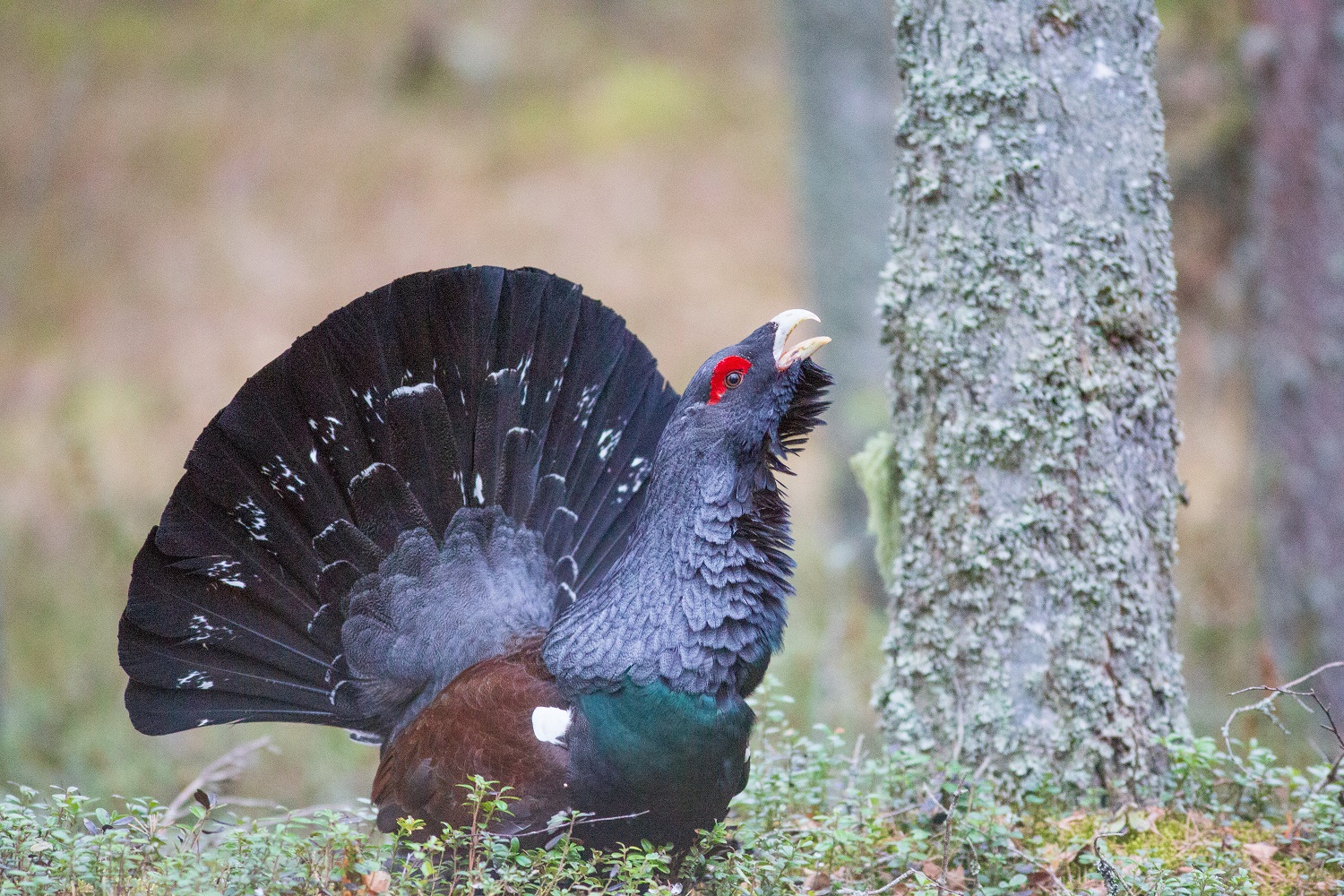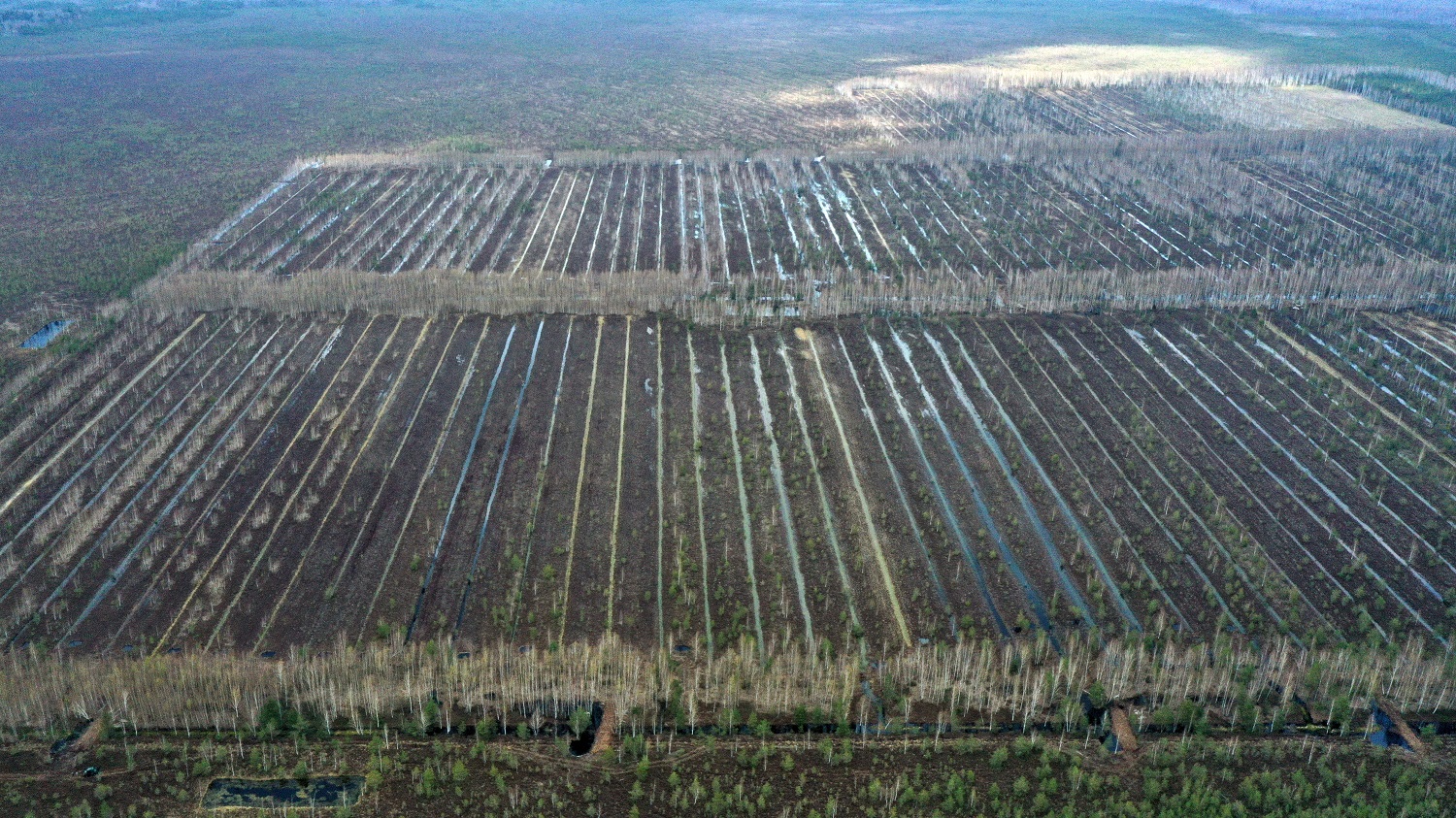Fen mire "Sporauskaye" - a pearl among the wetlands of the Belarusian Polesie. Photography: UNDP in Belarus.
Wetlands are among the ecosystems with the highest rates of decline, loss and degradation. According to the United Nations, wetlands are disappearing three times faster than forests. Wetlands are threatened by agriculture and construction industries, climate change, over-exploitation of peat resources, the spread of invasive species, water pollution and land degradation.
Photo: Alexander Kozulin/UNDP Belarus
Wetlands play a critical role in the well-being of nature and people. Home to hundreds of thousands of plant, insect and animal species, they are critical to maintaining biodiversity. Sixty percent of all threatened animal and plant species live in bogs.
Wetlands store freshwater and largely determine the productivity of farmland and maintain groundwater levels.
Ecotourists in the Yelnia bog, Vitebsk oblast. Photo: Sergey Gapon/UNDP Belarus.
Wetlands offer great opportunities for biomass production and alternative green energy sources, as well as can help develop environmental and recreational tourism.
Winter landscape of the Yelnia bog. Photo: UNDP Belarus.
Peatlands are particularly effective in this regard. They cover about 23% of Belarus territory, however most of these landscapes are degraded. The need to expand arable and forest land, as well as the commercial interest in peat as a fuel, were the main reasons for the large-scale drainage campaign that took place in Belarus in the second half of the twentieth century. The first activities for the protection, restoration and sustainable use of peatlands were implemented only starting from the 1990s.
The re-wetted area of the degraded Zhada peatland, the Vitebsk region. Photo: UNDP Belarus.
Today, Belarus is one of the leaders in peatland restoration in Europe. According to experts, over the past 10 years, with the support of international organizations, including the United Nations Development Programme (UNDP), the hydrological regime has been restored on 60,000 ha of disturbed and inefficiently drained peatlands.
Together with the Ministry of Natural Resources and Environmental Protection of the Republic of Belarus, UNDP with support from the Global Environment Facility (GEF) is implementing a complex work on conservation of wetlands and restoration of degraded and disturbed peatlands - a habitat for 40% of bird species, 35% of insect species and over 15% of wild plant species, listed in the Red Book of Belarus.
UNDP and partners are introducing and testing innovative natural solutions aimed at conservation and sustainable use of wetlands.
This includes a unique technology for fast-track restoration of wetlands through seeding wetland plants. In 2020, the “Wetlands” project, implemented by UNDP and the Ministry of Environment with the GEF funding, planted peatland seeds to rehabilitate the damaged Dokudovskoe peatland in the Lida district of the Hrodna region. The technology will help restore the fen mire within the next five years.
Restoration of fen mires by peatland plants planting on the Dakudauskoe bog in the Hrodna region. Photo: the National Academy of Science of Belarus.
Rewetting damaged peatlands will reduce CO2 emissions: the process of decomposition and mineralization of peat will be replaced by its accumulation, reducing greenhouse gas emissions.
A construction of a dam on the degraded Zhada peatland in the Vitebsk region. Photo: UNDP Belarus.
Belarus has already tested and is now successfully applying the method of ecological restoration of disturbed raised bogs by raising the water table through the construction a system of hydrological engineer facilities – soil dams, cofferdams and sluices. This method serves to gradually restore all functions of the peatland ecosystem but requires more time restoration by planting peatland plants.
Controlled burning (in winter) of dry vegetation is another nature-based solution to preserve peatland floodplain meadow ecosystems.
In general, large areas of reed and sedge thickets are unsuitable for nesting by waterfowl, which prefer open areas. Controlled or managed burning is probably one of the cheapest yet most effective ways to clear such large areas of dry vegetation.
Controlled burning on the Sporauskaye fen mire in the Brest region. Photo: Vadim Protasevich/UNDP Belarus.
In March 2021, test burns were conducted in the largest peatlands of Belarus in "Sporauski" and "Zvanets", removing about 1,500 ha of excess dry vegetation.
In the Belarusian Polesie region, UNDP is also supporting the introduction of sustainable use of floodplain meadows for biomass harvesting, which is important for the conservation of spring migration sites of wetland bird species.
Biomass collected in the Sporovskoye fen mire in the Brest region. Photo: Vadim Protasevich/UNDP Belarus.
3,000 ha of grass and shrubs were mowed, and biomass harvested to maintain open fen mires in the Sporovsky Nature Reserve. The collected biomass can be used as a local alternative to hydrocarbon fuels.
Belarusian nature reserves are successfully testing the methodology of natural rehabilitation by restoring sustainable food chains on floodplain meadows.
Heck cattle (auroch cattle) in the Pogost floodplain meadow in the Brest region. Photo: UNDP Belarus.
For example, the pilot project to introduce migratory cattle to floodplain meadows in the Pripyat River floodplain is helping to restore and maintain important habitat for migratory birds. The potential of floodplain meadows for livestock development has been explored.
Translocation (resettlement) of species is another natural solution for biodiversity conservation.
In the summer of 2021, 35 Aquatic Warbler chicks were relocated from southern Belarus to the north, to the territory of the Servech Nature Reserve. In autumn all birds left the area for wintering. Scientists will continue the observations in the spring of 2022, and the success of the experiment will depend on how many birds will return to "Servech".
Thanks to these innovative solutions, 60,000 ha of drained and disturbed peatlands have begun their journey to recovery. The nature-based solutions, implemented in Belarus, are part of UNDP's systematic and consistent work on the conservation and sustainable use of globally significant ecosystems.
***
In 2022, World Wetlands Day, celebrated annually on 2 February, will be celebrated for the first time as United Nations International Day. On 30 August 2021, the UN General Assembly adopted a resolution declaring 2 February as World Wetlands Day. On this day in 1971 the Convention on Wetlands of International Importance especially as Waterfowl Habitat was adopted in Ramsar, Iran. This instrument is an intergovernmental treaty whose goal is "the conservation and wise use of all wetlands through local, regional and national action and international cooperation, as a contribution to achieving sustainable development throughout the world".

 Locations
Locations













